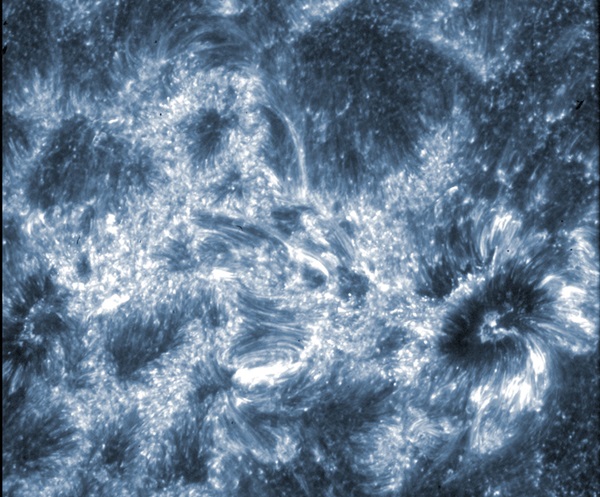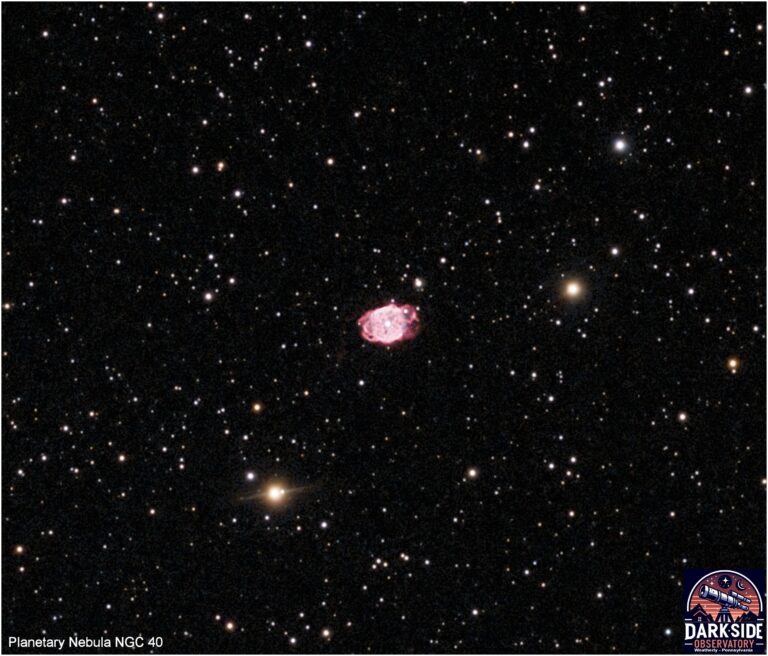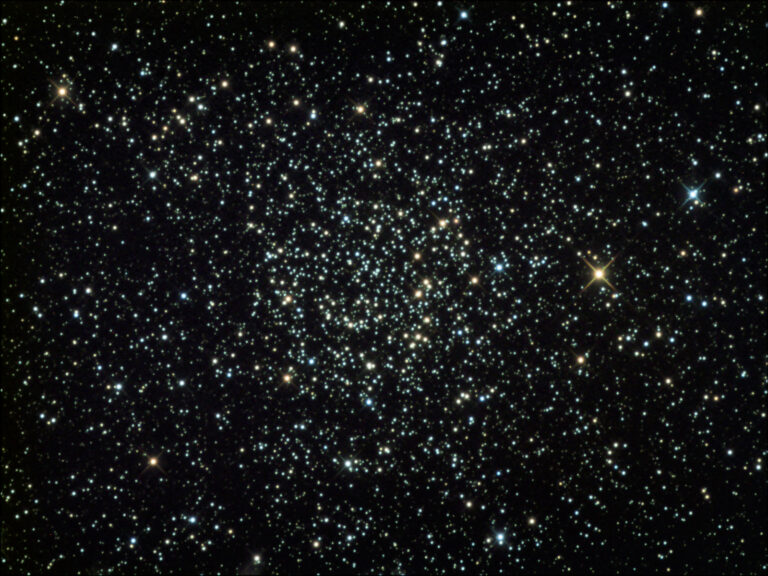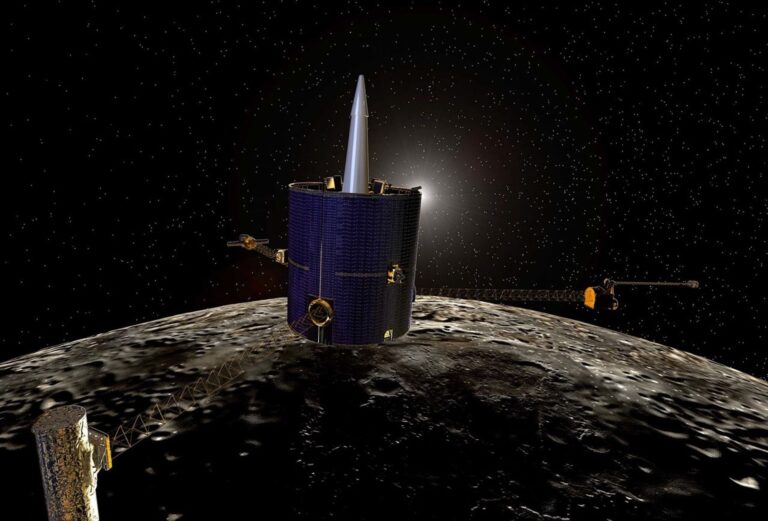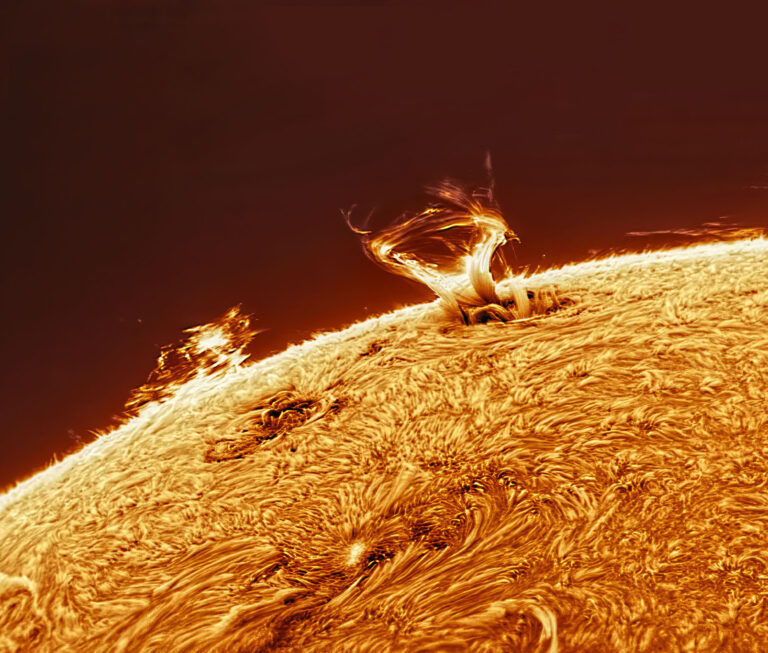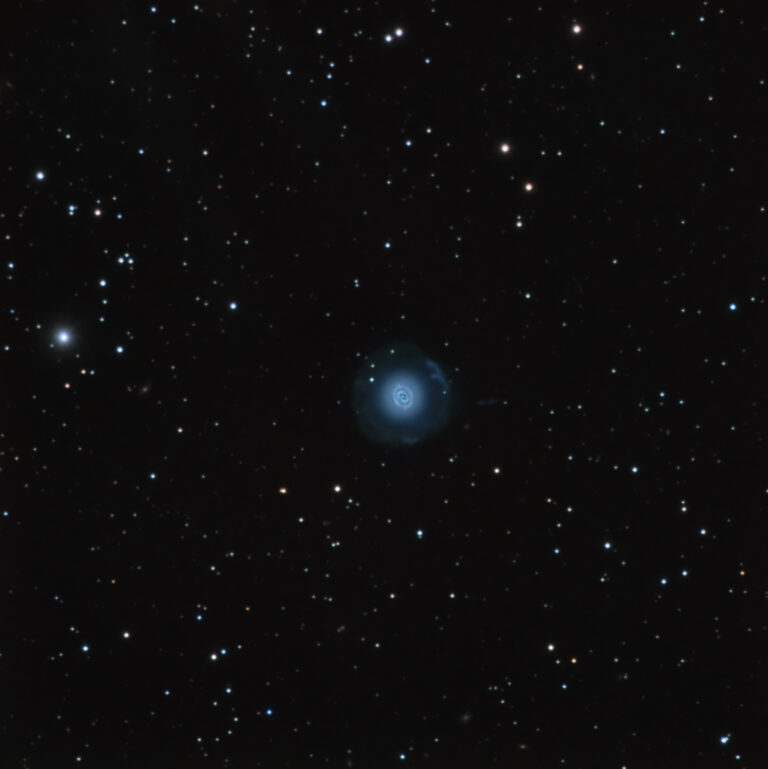“Already, we’re finding that IRIS has the capability to reveal a very dynamic and highly structured chromosphere and transition region,” said Hui Tian of the Harvard-Smithsonian Center for Astrophysics (CfA) in Cambridge, Massachusetts. “Thin and elongated structures are clearly present in these first-light images, and they evolve quickly in time.”
Important goals of the IRIS mission are to understand how the Sun’s million-degree corona is heated and to reveal the genesis of the solar wind. By tracing the flow of energy and plasma through the transition region — between the solar surface and the solar corona — where most of the Sun’s ultraviolet emissions are generated, IRIS data will allow scientists to study and model a region of the Sun that has yet to reveal its secrets. Ultimately, such understanding could enable scientists to provide forecasts for the Sun’s destructive behavior, which can disable satellites, cause power grid failures, and disrupt GPS services. IRIS will deliver near-continuous solar observations throughout its two-year mission.
IRIS takes images with four different filters in the ultraviolet wavelength range. It is the first time that images in these wavelengths have been taken with high resolution — about 150 miles (240 kilometers) — and at a cadence that can capture the rapid evolution of the chromosphere (every 10 seconds).
IRIS also takes very high-resolution spectra in three ultraviolet wavelength ranges. The spectra are critical for providing physical measurements underlying the dynamics seen in the images. Through the analysis of high-spatial-resolution spectra, scientists can measure flow speeds, energy deposition, and wave properties and densities of the atmospheric plasma.

